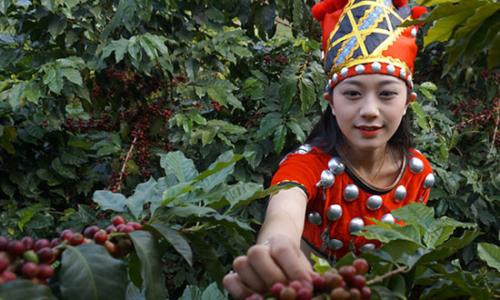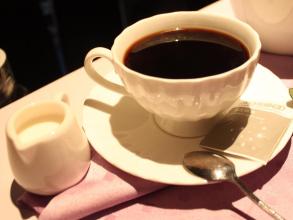Flavor description method for taste characteristics of Costa Rican Faramy coffee beans
Flavor description method for taste characteristics of Costa Rican Faramy coffee beans
The biggest difference between honey treatment and Brazilian semi-washing is that the former does not drip water, because be sure to choose flawless red fruit, pectin is sweet. The honey-treated pectin planer is more demanding, and the thickness of the pectin planing must be accurately controlled, just like the bean grinder.
In Costa Rica, there are many small-scale but high-quality coffee estates like Elsa, whose idea is to constantly improve the quality of raw coffee beans and get out of their own way of "boutique coffee" in order to obtain the best economic benefits.
Coffee is an important export product of Costa Rica, which earns a lot of foreign exchange for the country every year and is vividly called the "golden seed". Costa Rica's unique natural conditions are very suitable for growing high-quality coffee varieties. Although the output is small, Costa Rican coffee always occupies an important position in the international boutique coffee market because of its excellent quality.
Tarrazu in Costa Rica is one of the major coffee producing areas in the world. The coffee produced is light and pure in flavor and pleasant in aroma. Costa Rica, with its fertile volcanic soil and good drainage, is the first country in Central America to grow coffee and bananas for commercial value. Coffee and bananas are the country's main exports
Tarrazu in Costa Rican coffee is one of the major coffee producing areas in the world. The coffee produced has a light and pure flavor and pleasant aroma. Tarasu, located in the south of the country's capital, San Jos é, is one of the most valued coffee growers in the country. " The coffee "La Minita Tarrazu" is a famous local product.

Important Notice :
前街咖啡 FrontStreet Coffee has moved to new addredd:
FrontStreet Coffee Address: 315,Donghua East Road,GuangZhou
Tel:020 38364473
- Prev

Description of taste and flavor of coffee varieties in San Juan, Honduras
Honduras is less well-known in the consumer market because it does not have strong support in the handling and transportation of raw beans. However, in recent years, the country has begun to change dramatically, and the emphasis on the coffee industry has slowly opened up the international popularity of Honduran coffee. Honduran coffee is imported from El Salvador. Coffee production was lukewarm at first, until 1975
- Next

Introduction to the characteristics and flavor of gardening prostitute coffee beans produced in Candlestick, Costa Rica
Costa Rican Candlestick Garden geisha Coffee beans are produced there. Among the many excellent producing areas in Costa Rica, there is a famous producing area called Tarrazu, also known as Tarasu. Tarazhu is very famous in the world of boutique coffee and is one of the major coffee producing areas in the world. In the 2014 COE competition, of the 23 beans on the list, 17 came from
Related
- Detailed explanation of Jadeite planting Land in Panamanian Jadeite Manor introduction to the grading system of Jadeite competitive bidding, Red bid, Green bid and Rose Summer
- Story of Coffee planting in Brenka region of Costa Rica Stonehenge Manor anaerobic heavy honey treatment of flavor mouth
- What's on the barrel of Blue Mountain Coffee beans?
- Can American coffee also pull flowers? How to use hot American style to pull out a good-looking pattern?
- Can you make a cold extract with coffee beans? What is the right proportion for cold-extracted coffee formula?
- Indonesian PWN Gold Mandrine Coffee Origin Features Flavor How to Chong? Mandolin coffee is American.
- A brief introduction to the flavor characteristics of Brazilian yellow bourbon coffee beans
- What is the effect of different water quality on the flavor of cold-extracted coffee? What kind of water is best for brewing coffee?
- Why do you think of Rose Summer whenever you mention Panamanian coffee?
- Introduction to the characteristics of authentic blue mountain coffee bean producing areas? What is the CIB Coffee Authority in Jamaica?

